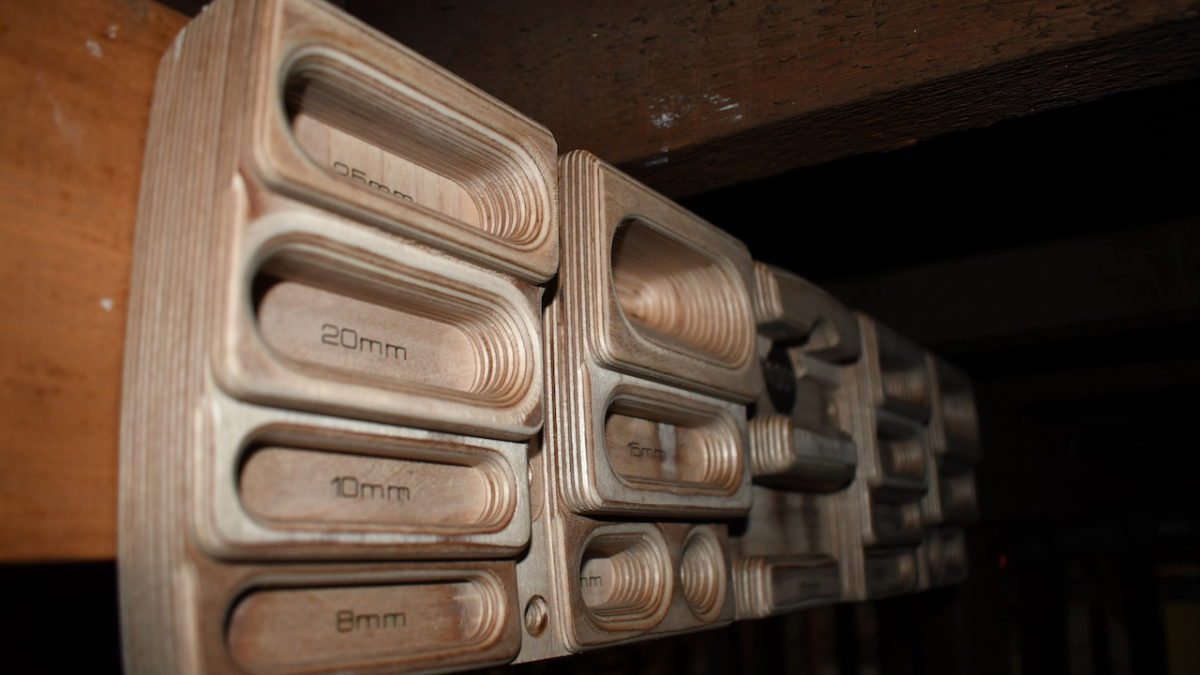New Moon Hangboard Rivals the Beastmaker
The brand-new Armstrong Fingerboard from Moon stands to become one of the best hangboards on the market today

In 2002, Ben Moon began what has become one of the most popular climbing brands in the world. Built out training and a commitment to hard climbing, Moon Climbing saw the beginning of aggressive progression in the sport.
Moon
Understanding this brand is the same as understanding key components of climbing history. Moon was a part of a generation of hard-core climbers redefining the way people approached climbing. He and Jerry Moffat trained hard to become two of the best, developing difficult routes all over the world.
At 23-years-old, Moon established Hubble, a 5.14c that was later upgraded to 5.14d. This regrading made it the world’s first 9a, predating Wolfgang Gullich’s Action Directe by a year. Since that time, Moon has continued to push the climbing world through products like the MoonBoard.
The MoonBoard revitalized climbing training by bringing a classic tool back from the past. Based on the woodies of the 90s and early 2000s, the MoonBoard took a finger-focused approach to climbing training. The steep angle and challenging grips created a generation of power-hungry boulderers along with a series of MoonBoard specialists.
Moon has pushed their standard board even further by releasing new hold sets and layouts over the last five years. Today, three standard MoonBoards exist. Each offers a unique set of boulder problems and allowing for tens of thousands of boulders. In 2021, Moon decided to release yet another new product. One that might better suit the climber living in an urban setting.
Armstrong Fingerboard
At its core, a hangboard is a simple instrument. Despite its simplicity, the high-pressure system requires careful engineering to be effective. Square-cut edges and oddly shaped grips can turn this simple tool into an inaccessible chore. Quality is essential.
The Armstrong fingerboard begins with its materials. Composed of the same birch plywood used in Moon’s climbing holds, the dense and durable material provides a stable base for hangboarding. While many polyurethane hangboards exist, their sharp corners cut splits into finger-tips. As time passes, the plastic wears and eventually becomes glassy, which reduces splits, but becomes slippery when wet.
Thin skin is a natural aspect of consistent training and the non-absorbent plastic polyurethane boards allows for slippage during a hang. As movement in high stress fingerboarding can lead to injury, and absorbent material is preferrable. Wooden boards absorb seepage providing more consistent friction over the length of the hang.
With that understood, the question of materials becomes further refined. Tension and Beastmaker build their boards out of single pieces of poplar. Although poplar is absorbent, Moon decided to use birch plywood. The resulting effect allows for climbers to hangboard with limited sliding. The individual plys each provide a bevel for friction and pair the stickiness of new polyurethane with the absorptivity of wood. The effect is a regular, enticing hangboard experience that both grips the skin and soaks up the seepage of thinner tips.
Each of the Armstrong Fingerboard four-fingered edges are rounded and comfortable. Although the Tension Grindstone Mk2 has some of the best rounding of any hangboard between the 15mm and 35mm grips, the holds become sharp around the 8mm to 10mm range. The Armstrong avoids this sharpness with the plywood plywood design. Because the wood itself does provide a degree of friction, the grips needn’t have a sharp edge at the back of the grip to produce friction. Instead, the edges are rounded and comfortable to access.
The board itself comes with pairs of 25mm, 20mm, 15mm, 10mm, and 8mm edges. Two one-arm edges bisect the board measuring 22mm and 18mm in depth. The 22mm reflects the depth of the Beastmaker 2000 edge but loses the minor amount of in-cut that comes along with that grip. The 18mm edge provides a nice step down from the 22 and offers a new benchmark for which a person can train.
Furthermore, these one-arm edges are free-floating, allowing climbers to pinch the grips for greater stability. Although outdoor climbing holds are generally in-set, it is nice to have a thumb-on option that can provide longer hang times through greater stability. In hangboarding, it is better to have more options.
The board also bears two-finger pockets and mono grips alongside sloping, four-finger slots. These 35-degree wooden slopers are easier to hang than the Beastmaker slopers, making it a nice entry-level solution to sloper hangboarding.
What sets this board apart from its peers is that it does not lack features. It has everything from jugs to slopers to monos to one-arm-hang grips to 8mm holds through to pulley attachments. Moon even sends along the screws you might need to attach it to your door frame. The only weaknesses of the board come from its size. At 65cm in length and 16.5cm in height, it is one of the larger wooden hangboards on the market.
A person might also note that the slopers are in fact too sticky for the level of the board. This problem is mitigated by adding weight, but worth mentioning nonetheless. Overall, it is a phenomenal tool and some climbers have begun attempting unique hanging challenges on its many features. Above, Canadian Yves Gravelle shows us how to open elevator doors and will surely show us numerous other challenges as time progresses.
Buy the Armstrong Fingerboard here.



